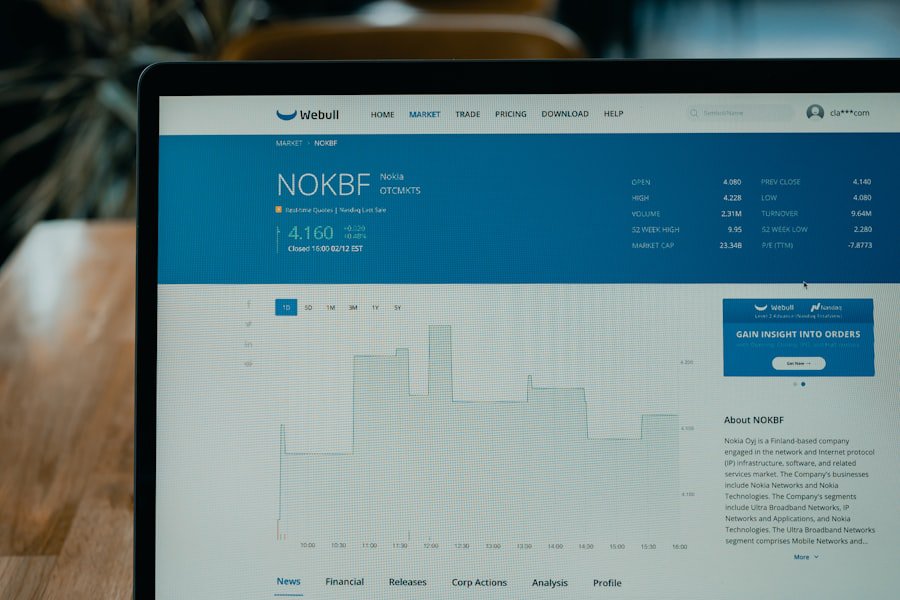In the field of cybersecurity, TTP stands for Tactics, Techniques, and Procedures. These elements represent the methods and strategies employed by cyber attackers to infiltrate systems, steal data, or inflict damage. Understanding TTP is essential for Cybersecurity professionals as it enables them to anticipate and defend against potential threats.
Tactics refer to the overall strategy or objective of an attacker, such as gaining unauthorized access to a network. Techniques are the specific methods used to achieve the tactic, like phishing emails or exploiting software vulnerabilities. Procedures are the detailed, step-by-step processes attackers follow to execute their techniques, such as using malware to access a system and extract data.
To effectively counter cyber threats, organizations must comprehend the TTP used by attackers. By analyzing and identifying common TTP, cybersecurity professionals can develop proactive defense strategies and implement appropriate security measures. These may include deploying intrusion detection systems, conducting regular security assessments, and implementing robust access controls.
Furthermore, understanding TTP helps organizations stay ahead of emerging threats and adapt their security posture accordingly. Cybersecurity professionals must continuously monitor and analyze TTP to effectively protect their systems and data from potential attacks.
Key Takeaways
- TTP (Tactics, Techniques, and Procedures) are crucial in understanding and combating cyber security threats.
- TTP plays a vital role in protecting data by identifying and responding to potential threats and vulnerabilities.
- Common threats to data security include phishing, malware, and insider threats, and TTP can help in detecting and mitigating these risks.
- Implementing TTP best practices involves continuous monitoring, threat intelligence sharing, and regular updates to security protocols.
- TTP is essential in incident response and recovery, helping organizations to effectively manage and minimize the impact of security breaches.
The Role of TTP in Protecting Data
TTP plays a critical role in protecting data from cyber threats. By understanding the tactics, techniques, and procedures used by attackers, organizations can develop robust defense strategies to safeguard their sensitive information. This may involve implementing encryption protocols to secure data at rest and in transit, as well as deploying advanced threat detection and prevention tools to identify and mitigate potential attacks.
Additionally, understanding TTP allows organizations to conduct thorough risk assessments and develop comprehensive security policies and procedures to protect their data assets. Furthermore, TTP can help organizations establish a proactive security posture by enabling them to anticipate potential threats and vulnerabilities. By staying informed about the latest TTP used by cyber attackers, organizations can continuously update their security measures to stay ahead of emerging threats.
This may involve implementing regular security awareness training for employees, conducting penetration testing to identify potential weaknesses, and staying informed about the latest security trends and best practices. Ultimately, by leveraging TTP in their data protection strategies, organizations can effectively mitigate the risk of data breaches and unauthorized access to sensitive information.
Common Threats to Data Security and How TTP Can Help

There are several common threats to data security that organizations must be aware of in order to effectively protect their sensitive information. These threats include malware attacks, phishing scams, insider threats, and ransomware attacks. By understanding the tactics, techniques, and procedures used by attackers in these types of threats, organizations can develop effective defense strategies to mitigate the risk of data breaches and unauthorized access.
Malware attacks, for example, are a common threat to data security that can be mitigated through the use of TTP. By understanding the techniques used by attackers to distribute malware, such as through malicious email attachments or compromised websites, organizations can implement robust antivirus and anti-malware solutions to detect and prevent these types of attacks. Additionally, by staying informed about the latest malware trends and attack vectors, organizations can proactively update their security measures to defend against emerging threats.
Phishing scams are another common threat to data security that can be addressed through TTP. By understanding the tactics used by attackers to deceive users into disclosing sensitive information, organizations can implement comprehensive security awareness training programs to educate employees about the risks of phishing and how to identify suspicious emails. Furthermore, by establishing procedures for reporting and responding to potential phishing attempts, organizations can effectively mitigate the risk of falling victim to these types of attacks.
Insider threats are also a significant concern for data security that can be addressed through TTP. By understanding the tactics used by malicious insiders to steal or compromise sensitive information, organizations can implement strong access controls and monitoring systems to detect and prevent unauthorized activities. Additionally, by establishing procedures for conducting regular security audits and monitoring employee behavior, organizations can effectively mitigate the risk of insider threats.
Ransomware attacks are another common threat to data security that can be mitigated through the use of TTP. By understanding the techniques used by attackers to encrypt sensitive data and demand ransom payments, organizations can implement robust backup and recovery solutions to restore their systems in the event of an attack. Additionally, by establishing procedures for responding to ransomware incidents, organizations can effectively mitigate the impact of these types of attacks.
Implementing TTP Best Practices in Cyber Security
| Best Practice | Metrics |
|---|---|
| Threat Intelligence Integration | Percentage of threat intelligence sources integrated |
| Incident Response Plan | Time to detect and respond to incidents |
| Security Awareness Training | Number of employees trained |
| Vulnerability Management | Number of vulnerabilities identified and patched |
| Network Segmentation | Percentage of network segmented |
Implementing TTP best practices is essential for organizations looking to enhance their cyber security posture and protect their sensitive data from potential threats. One best practice is to conduct regular threat intelligence analysis to stay informed about the latest TTP used by cyber attackers. By leveraging threat intelligence feeds and collaborating with industry peers, organizations can gain valuable insights into emerging threats and adapt their security measures accordingly.
Another best practice is to implement robust access controls and authentication mechanisms to prevent unauthorized access to sensitive data. By leveraging multi-factor authentication and strong password policies, organizations can effectively mitigate the risk of unauthorized access and data breaches. Additionally, by establishing procedures for managing user privileges and conducting regular access reviews, organizations can maintain a strong security posture.
Furthermore, implementing robust encryption protocols is a best practice for protecting sensitive data from potential threats. By encrypting data at rest and in transit, organizations can ensure that their information remains secure even if it falls into the wrong hands. Additionally, by leveraging encryption technologies such as SSL/TLS and VPNs, organizations can protect their data from interception and unauthorized access.
Additionally, implementing robust incident response procedures is a best practice for addressing potential cyber security incidents. By establishing clear roles and responsibilities for responding to security breaches, organizations can effectively mitigate the impact of attacks and minimize the risk of data loss. Furthermore, by conducting regular incident response drills and tabletop exercises, organizations can ensure that their response procedures are effective and well-practiced.
The Importance of TTP in Incident Response and Recovery
TTP plays a crucial role in incident response and recovery efforts following a cyber security incident. By understanding the tactics, techniques, and procedures used by attackers, organizations can effectively respond to security breaches and mitigate the impact of attacks on their systems and data. This may involve conducting thorough forensic analysis to identify the root cause of an incident, as well as implementing robust recovery procedures to restore systems and data.
Furthermore, understanding TTP allows organizations to develop effective incident response plans that outline clear steps for addressing potential security breaches. By establishing procedures for containing incidents, eradicating threats, and recovering systems and data, organizations can ensure that they are well-prepared to respond to potential attacks. Additionally, by conducting regular incident response drills and tabletop exercises, organizations can validate their response plans and identify areas for improvement.
Moreover, understanding TTP is essential for conducting thorough post-incident analysis to identify lessons learned and improve future incident response efforts. By analyzing the tactics used by attackers during an incident, organizations can gain valuable insights into potential weaknesses in their security posture and develop proactive defense strategies to prevent similar incidents in the future.
TTP and Compliance with Data Protection Regulations

TTP plays a critical role in helping organizations comply with data protection regulations such as GDPR, HIPAA, and PCI DSS. By understanding the tactics, techniques, and procedures used by attackers, organizations can develop robust security measures to protect sensitive data and ensure compliance with regulatory requirements. This may involve implementing encryption protocols to secure data at rest and in transit, as well as deploying advanced threat detection and prevention tools to identify and mitigate potential attacks.
Furthermore, understanding TTP allows organizations to conduct thorough risk assessments and develop comprehensive security policies and procedures that align with regulatory requirements. By staying informed about the latest TTP used by cyber attackers, organizations can continuously update their security measures to stay ahead of emerging threats while also ensuring compliance with data protection regulations. Additionally, TTP enables organizations to establish effective incident response procedures that align with regulatory requirements for reporting security breaches.
By understanding the tactics used by attackers during incidents, organizations can ensure that their response efforts comply with regulatory requirements for incident notification and data breach reporting.
The Future of TTP in Cyber Security
The future of TTP in cyber security is likely to involve continued evolution as cyber attackers develop new tactics and techniques to compromise systems and steal data. As technology advances and new attack vectors emerge, it will be essential for organizations to stay informed about the latest TTP used by attackers in order to adapt their security measures accordingly. Furthermore, the future of TTP in cyber security is likely to involve increased collaboration among industry peers and government agencies to share threat intelligence and develop proactive defense strategies.
By leveraging threat intelligence feeds and collaborating with industry peers, organizations can gain valuable insights into emerging threats while also contributing to collective efforts to combat cyber crime. Moreover, the future of TTP in cyber security is likely to involve increased automation of threat detection and response processes. As organizations face growing volumes of security alerts and potential threats, it will be essential for them to leverage advanced technologies such as machine learning and artificial intelligence to analyze TTP at scale while also responding to potential incidents in real time.
In conclusion, understanding TTP is essential for organizations looking to enhance their cyber security posture and protect their sensitive data from potential threats. By analyzing common TTP used by attackers, organizations can develop proactive defense strategies while also ensuring compliance with data protection regulations. The future of TTP in cyber security is likely to involve continued evolution as technology advances while also involving increased collaboration among industry peers and government agencies.
One interesting article related to TTP in cyber security is “Entering the Metaverse: Creating Your Virtual Identity” which discusses the importance of protecting personal information and digital identity in virtual environments. The article explores the potential security risks and challenges that come with creating and managing a virtual identity in the metaverse. It also provides insights on how individuals can safeguard their virtual presence from cyber threats. You can read the full article here.
FAQs
What is TTP in cyber security?
TTP stands for Tactics, Techniques, and Procedures. In cyber security, TTP refers to the behavior and methods used by attackers to carry out their attacks.
Why is understanding TTP important in cyber security?
Understanding TTP is important in cyber security because it helps organizations and security professionals to identify and defend against specific attack patterns and behaviors.
How can TTP be used in cyber threat intelligence?
TTP can be used in cyber threat intelligence to analyze and categorize cyber threats based on their tactics, techniques, and procedures. This helps in identifying patterns and trends in cyber attacks.
What are some common TTPs used by cyber attackers?
Common TTPs used by cyber attackers include phishing, malware deployment, social engineering, and exploitation of software vulnerabilities.
How can organizations defend against TTP-based cyber attacks?
Organizations can defend against TTP-based cyber attacks by implementing strong security measures such as network segmentation, access controls, regular security training for employees, and keeping software and systems up to date with patches.











Leave a Reply